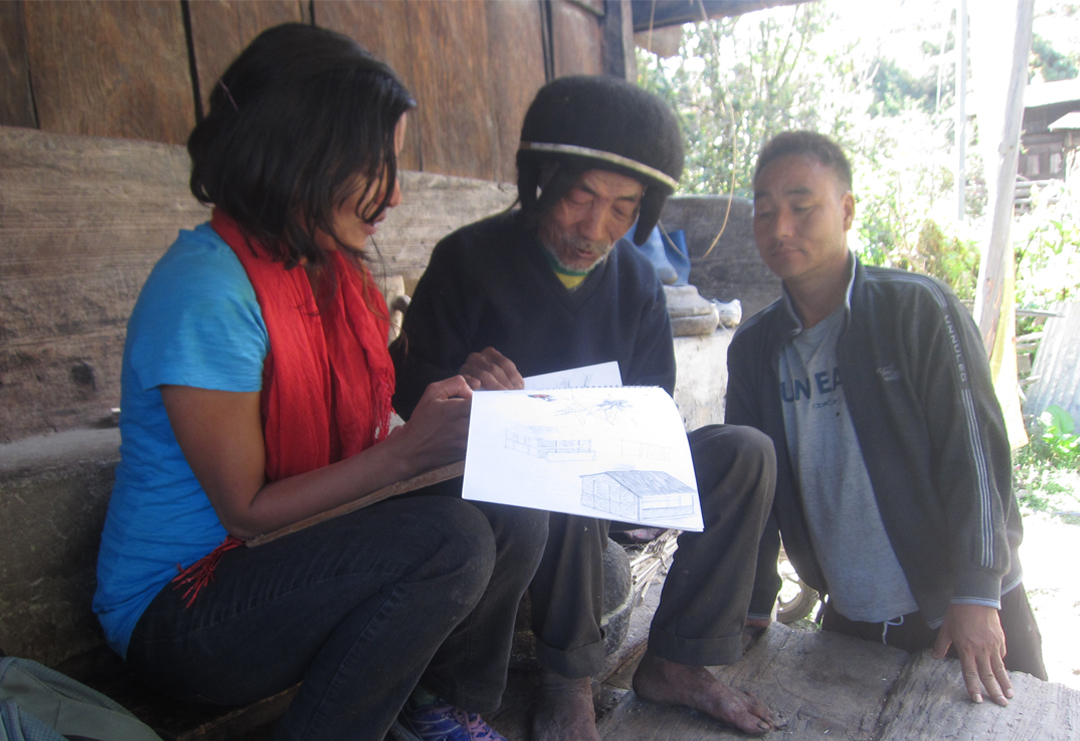People make places. The stories that people told us about their forests gave us a rich canvas, a busy notepad and also our own personal memory project. There have been very few Forest Departments in India as helpful as the Arunachal Pradesh Forest Department. We would like to thank Millo Tasser, IFS, the Divisional Forest Officer of Shergaon Forest Division and Bharat Singh Hada, IFS for their help. Our assistants in the field came from different ages: from the young Tashi Tsering and Norbu Wangdi to the learned Pema Mosobi. We are grateful to Pema Mosobi, Umesh Srinivasan and Gombu Tsering Monpa for the unforgettable besmeh journey we made through Eaglenest Wildlife Sanctuary. We had a rough-and-ready route that was meticulously kept and generously shared by R.D. Thongdok. We would also like to thank him and Rinchin Thongdok for retrieving the Chaku electoral roll and old photographs for us. People have helped us in so many big and small ways. Some took the day off to walk with us, found those old photo albums, showed us rare plants in their gardens, and opened up their houses and lives to us. We are grateful to have spoken to each and every one we were able to interview; among those we would like to especially thank: Brigadier Dinesh Hooda, Nawang Norbu Khrimey, Kejang Yodon, Sange Lamu Mosobi, D.K. Thongdok (Thungree), Nana Khrimey, Chezang Khrimey, Dawa Sarai, Lassang Glow, Anyok Glow, Tilli Glow, Dorjee Glow, Indi Glow and Chamu Rai. We would like to thank Tsering Dorjee Wanja, Digen Ngate and Ganga Mani Khujur for smoothing things while we were in field. While we wrote and re-wrote several drafts: several kind people lent their ears, listened patiently, enthusiastically added and carefully subtracted parts so that we could streamline this website and our book. Sang Norbu Sarai, D.K. Thongdok, Sange Norbu Phiang, Tilli Glow, Indi Glow and Dorkhan Glow were our editors from the field. As valuable were our desk editors Aathira Perincherry, Aliya Abreu and Umesh Srinivasan. This project would not have been possible without the support of several institutions that have been our pillars: Shergaon Forest Division, Singchung Village Council, Tukpen Village Council and the Ravi Sankaran Inlaks Foundation. As we wrap up this project, we realise that Eaglenest Wildlife Sanctuary is a special place not only for its outstanding biodiversity but also for the memories that are attached to this protected area. Places also make people.
At the outset this is not meant to be a go-to for factual information. We wanted to create memorabilia and visual artifacts that span important memories related to this general area. Our stories focus on the places abutting Eaglenest – Tenga, Rupa, Thungri, Singchung and the Ramalingam area. As with any re-constructions through oral histories, there are bound to be discrepancies with data that is based on recalls. But in trying to weave together a greater context and background of these forests, we have tried to make this as factual, consultative and experiential as possible.
This led to discussions in a variety of settings – in kitchens, in the sunshine of gompas (Buddhist monasteries), walking through forests, spending time with elders etc. We interpreted these interviews and translated them into drawings that try to interpret the landscape, events and historical sites. This approach of drawing landscapes back to life has been used to bring to life once bustling trade towns that died away due to a shift in the trade route.

Nandini Velho sharing our research with Chumbi Megeji, a honey collector and one of the oldest living people in his community
We were lucky to walk back through time where we discovered some talented photographers; others took us through their studio-shot old photo albums; some shared the story of their lives – their nostalgia about the past and their hope for the future. When speaking to individuals it often led to visiting the same people in different spaces and multiple times for informal discussions or sharing transcripts and sketches we had done. We complimented this with accessing government records, old reports and press clippings.

Artist Anjora Noronha drawing a portrait of Senju Tamang in Lower Ramalingam
By stitching together architectural remnants or visual imprints in the landscape with descriptions by those who lived in that past, we hope to be able to re-create imagery of the past. Our hope is that this will be the start of an important ongoing conversation – one that gets more people together, more people to agree (and disagree) and for people to remember Eaglenest as they have experienced it.
